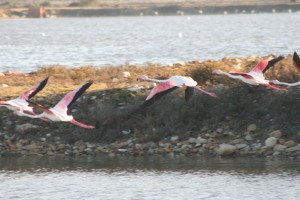Paulsen is from a hip river city, but shows why Glendower is ‘home away from home’ 0
EDENVALE, Gauteng – Maiken Bing Paulsen may come from the hip river city of Drammen in Norway, but she showed on Wednesday why she calls Glendower Golf Club her “home away from home” when she fired a six-under-par 66 to claim a share of the lead after the first round of the Jabra Ladies Classic.
Russia’s Nina Pegova also shot a 66, but there was little doubt Paulsen was the club favourite. That’s because whenever the 27-year-old is in South Africa playing on the Sunshine Ladies Tour, she bases herself in Johannesburg and uses the scenic Glendower course for training purposes.
“This is my home away from home, I have spent a lot of time here at Glendower,” Paulsen said after her round of six birdies, an eagle and two bogeys. “They have been really nice to me over the years, letting me practise here on this beautiful and tough course.
“So I know the members well and the staff have been very good to me. And it was a really enjoyable round today, I was really steady off the tee and I didn’t miss any fairways. And my putting was exceptional, I can’t remember when last I holed so many, but that’s something you can’t always count on,” Paulsen said.
In her fifth year on the Ladies European Tour, Paulsen began her round at Glendower on Wednesday on the 10th and produced a scintillating front nine with five birdies and no dropped shots.
The front nine was more testing for her as she started with three pars and then went bogey-birdie-bogey. The turning point, and the shot that ultimately put her top of the leaderboard, came on the seventh tee.
“They moved us up this morning and the flag was 215 metres away. I wasn’t sure whether to use a three-wood because I thought that may have been too long, so I just hit a high fade instead and it landed a metre-and-a-half from the flag, then I made the eagle putt,” a delighted Paulsen said.
She only had a lease on the sole lead, however, because about 20 minutes later, Pegova joined her on six-under after making a birdie on the par-three 17th. It was the 30-year-old’s eighth birdie of the day, and she also had two bogeys, on the fifth and 10th holes, both par-fours.
England’s Gabriella Cowley was alone in third after shooting a 67, while South Africans Cara Gorlei and Nadia van der Westhuizen shared fourth on four-under-par. Fellow South Africans Tandi McCallum and Bronwyn Doeg were tied in sixth place after making 69s.

